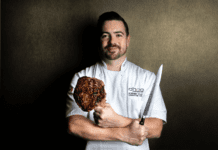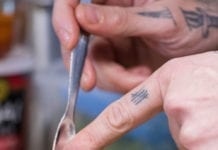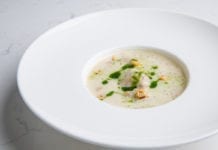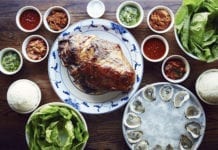Hoping to whisk their way into culinary history books, chefs from around the world gather every four years in a quest for greatness. This year, IKA (Internationale Kochkunst Ausstellung) — the World Culinary Olympics — attracted more than 50 nations and 2,000 chefs. “It’s the biggest number of participants ever, and the level of skill is very high,” says Ragnar Fridriksson, director, World Association of Chefs Societies of the event in Erfurt, Germany where nearly 10,000 competition menus were prepared in October.
Take 35 national teams competing over four nights and you’ve got the big event’s Restaurant of Nations competition. Chefs have five-and-a-half hours prep time. Three courses are cooked for 110 guests each night when jurors clutch clipboards, randomly auditing for best practices, safe hygiene and proper preparation techniques. Meanwhile, tasting judges sample meals, scrutinizing plates for presentation, ingredients, composition and, of course, flavour. Olympic teams earn gold, silver or bronze by achieving between 90 and 100, 80 and 89 or 70 and 79 points, respectively from a panel of judges from around the world. The country with the highest score is named overall winner.
In the end, Sweden hit a grand slam, victorious in both hot and cold competitions, its spice-crusted red-deer saddle and cured-and-blackened ling propelled them to the top. Meanwhile, Norway placed second overall and Germany, third.
Canadian chefs also impressed, landing in fourth place among the 35 national teams that competed. “It’s a lot of work, but that’s nothing new, it’s always been like that,” says Simon Smotkowicz, retiring manager of Team Canada. “We finished fourth with a 0.18 difference between the third-place team, and us…. We’re very satisfied with the result. Of course, we’d like to be first or second, but that’s how it goes,” adds the manager, whose team earned 89.15 for its lobster-and-scallop globe with lobster hollandaise (appetizer); roasted lamb loin, sous-vide lamb shoulder rubbed with root vegetable ash (entrée); and lemon meringue cream and honey-berry frozen yogurt with honey-berry cake (dessert).
Canada’s showing at IKA is especially sweet given that one of its members, James Holehouse, resigned at the last moment. “He bowed out for personal reasons, and it was really tough,” says Smotkowicz. Jennifer Stang was brought in to replace him with seven weeks to spare. “They asked me, and, in a moment of temporary insanity, I accepted,” quips the Debbie Harry look-a-like. The shuffle paid off. “She worked tirelessly — she’d be in for 15 hours, go home for a couple hours, come back and work and work and work,” says Smotkowicz. “If she hadn’t performed for us, we wouldn’t have been in fourth place with the gold,” he adds. Stang is equally thrilled with her first taste of international competition. “Being the first female pastry chef on Team Canada, and putting myself in a group of men who’ve been together for four years, it’s been difficult,” she laughs. “But I came here to do a job — I wanted to help.”
And, although Donald Gyurkovits is proud of Canada’s accomplishments at IKA, the president of the Canadian Culinary Federation/Fédération Culinaire Canadienne (CCFCC) has a gripe. “Money’s important, and we need the support of our government. We have 11 teams here in Erfurt, and they have to raise their own funds,” he explains. “Some chefs take time off work — other countries pay their chefs to work and train — our guys work an eight-hour job and then train for the next eight hours.”
But it’s that perseverance, passion and commitment Gyurkovits celebrates. “It’s not about a gold medal,” he adds. “It’s about the journey to get that medal.” Despite his misgivings, the CCFCC president toasts the team’s efforts on the world stage at IKA 2012. “Fourth in the world, that’s not too bad at all,” he says.
image courtesy of Adrian Bell




















